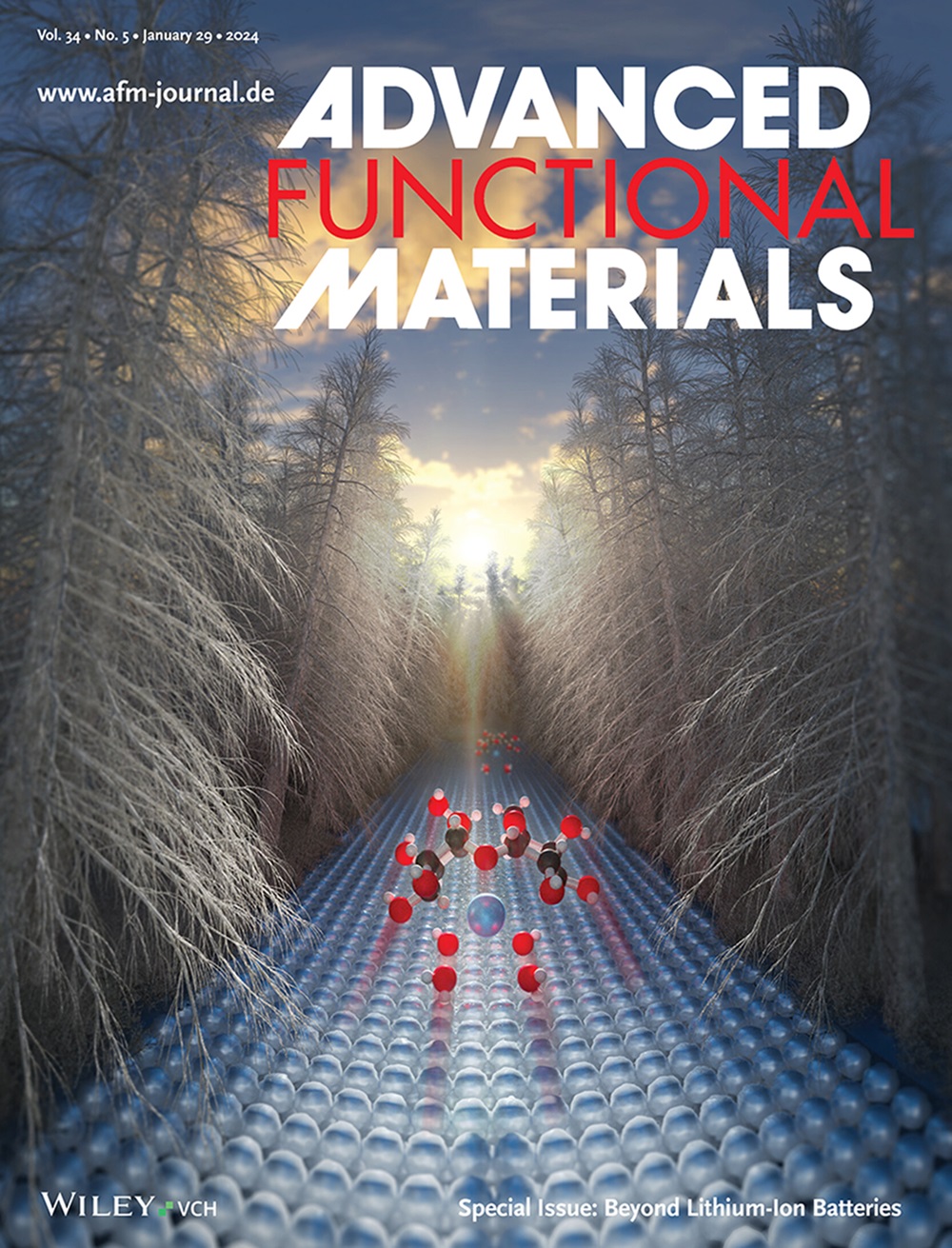通过多酚化学快速粗化聚多巴胺纳米涂层
IF 19
1区 材料科学
Q1 CHEMISTRY, MULTIDISCIPLINARY
引用次数: 0
摘要
多巴胺(DA)介导的表面修饰策略被认为是在不同底物上开发多功能表面的一种简单而通用的方法。然而,快速原位制备粗糙聚多巴胺纳米涂层(PD)仍然是一个有希望但具有挑战性的任务。本文报道了一种利用多酚化学方法原位制备PD粗料的简便快速方法。单宁酸(TA)是制备聚多巴胺-单宁酸纳米涂层(PDT)的代表性多酚分子,与无TA工艺相比,其生长速度提高了2.40倍。此外,PDT的微尺度粗糙度使其最大亚甲基蓝负载能力比PD提高了1.30倍。此外,PDT具有多功能性,如亲水性、抗氧化性和高容量吸附。值得注意的是,PDT可以实现各种基材的直接表面改性和二次表面功能化,在表面改性工程中显示出巨大的潜力。这一策略为原位快速制备粗糙纳米涂层提供了一种简单而通用的方法,为开发先进的多功能纳米材料开辟了新的可能性。本文章由计算机程序翻译,如有差异,请以英文原文为准。
Rapidly Roughening Polydopamine Nanocoating Through Polyphenol Chemistry
The dopamine (DA)‐mediated surface modification strategy is regarded as a facile yet versatile approach for developing multifunctional surfaces on diverse substrates. However, the rapid in situ fabrication of rough polydopamine nanocoatings (PD) remains a promising yet challenging task. Herein, a facile and rapid strategy for in situ rough PD fabrication through polyphenol chemistry is reported. Tannic acid (TA) is selected as a representative polyphenol molecule for the fabrication of polydopamine‐tannic acid nanocoating (PDT), resulting in a 2.40‐fold higher growth rate compared to the TA‐free process. In addition, the microscale roughness of PDT enhances the maximum methylene blue loading capacity by 1.30‐fold compared to PD. Furthermore, PDT exhibits multifunctionality such as hydrophilicity, antioxidant properties, and high‐capacity adsorption. Remarkably, PDT enables both direct surface modification and secondary surface functionalization of various substrates, demonstrating great potential in surface modification engineering. This strategy provides a simple yet universal approach for the rapid in situ fabrication of rough nanocoatings, opening new possibilities for developing advanced multifunctional nanomaterials.
求助全文
通过发布文献求助,成功后即可免费获取论文全文。
去求助
来源期刊

Advanced Functional Materials
工程技术-材料科学:综合
CiteScore
29.50
自引率
4.20%
发文量
2086
审稿时长
2.1 months
期刊介绍:
Firmly established as a top-tier materials science journal, Advanced Functional Materials reports breakthrough research in all aspects of materials science, including nanotechnology, chemistry, physics, and biology every week.
Advanced Functional Materials is known for its rapid and fair peer review, quality content, and high impact, making it the first choice of the international materials science community.
 求助内容:
求助内容: 应助结果提醒方式:
应助结果提醒方式:


